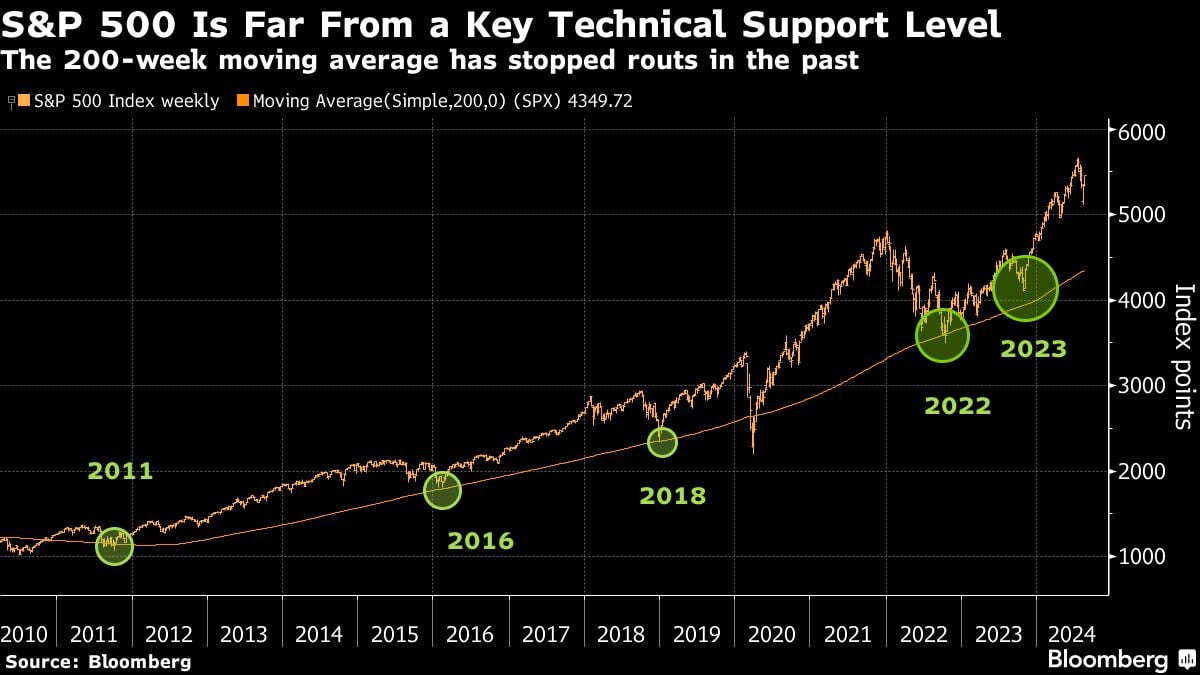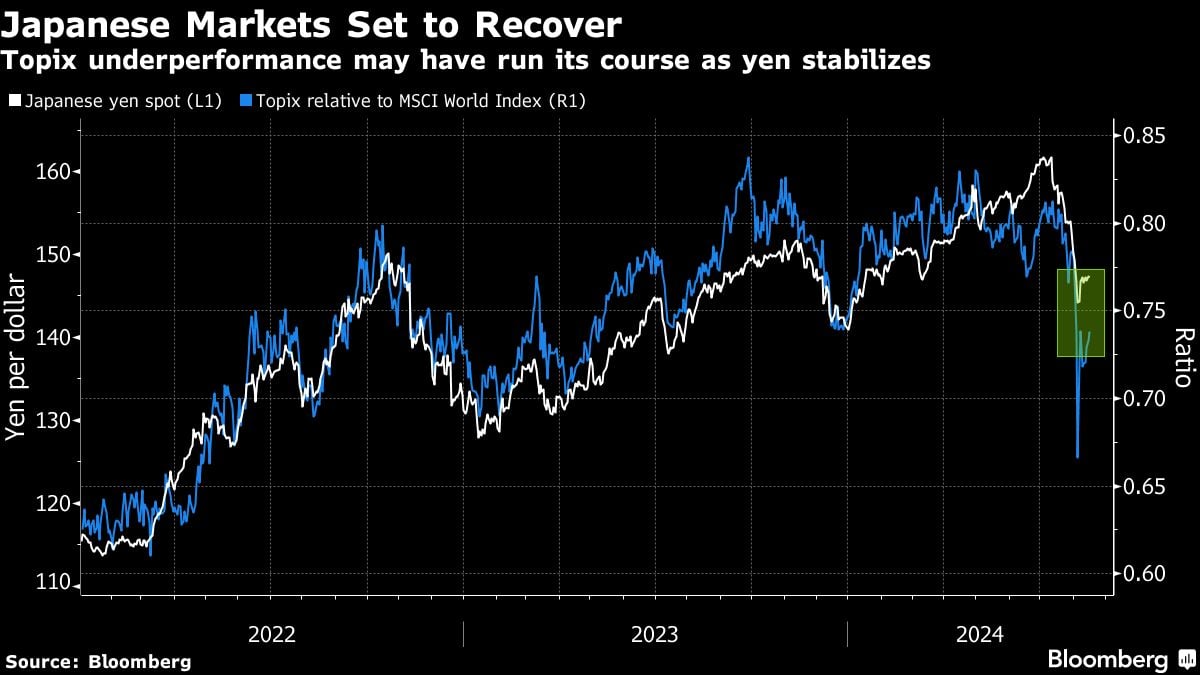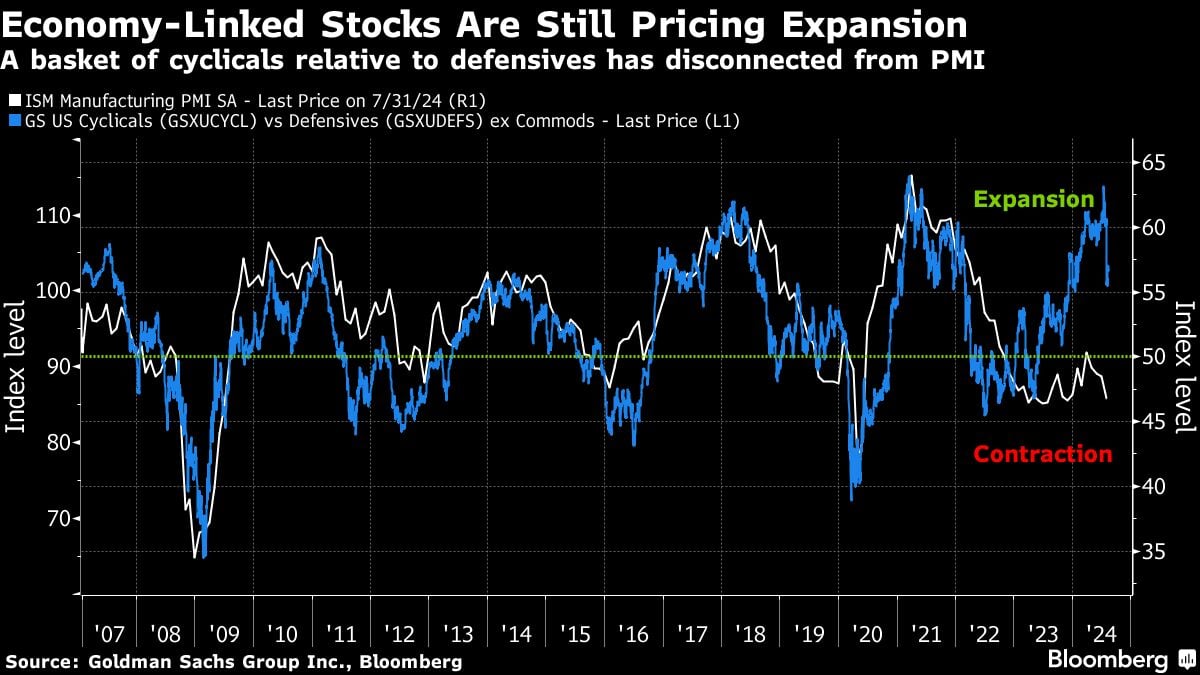What Panic? Stocks Are Quickly on Way Back to Record Highs

In 2022, the index sank 25% before a sustained rebound. And during the global financial crisis, it plunged as much as 57% — and then took four years to fully recover.
Above Key Levels
The S&P 500’s 200-week moving average has been a strong indicator of the index’s floor since the turn of the century. More recently, the benchmark bounced back after hitting it during the economic growth scare in 2016, the U.S.-China trade war in 2018 and again in 2022.
This time around, it came nowhere near that threshold even at its lowest point.
While that also indicates how much further the index could slump in a renewed selloff, it shows that investors were confident enough to swoop in well before the market tested a new bottom.

Japan Rebounding
Japan was at the heart of the global turmoil after its monetary policy tightening sent the yen to one of its strongest levels this year, driving hedge funds to sell off assets to unwind carry trades financed by low-cost loans in Japan.
The currency is now easing again because policymakers there were quick to reassure markets that further rate hikes were likely off the table. That’s flowed through to stocks in Japan, too.

Warning Sign
On the other hand, the economic risk that the Fed has waited too long to start cutting rates hasn’t gone away. So the recent rebound means that more of a soft landing is being priced in, exposing the market to another slide if that proves off base.
One measure of what investors are counting on can been seen in how stocks linked to the economic cycle — or so-called cyclical sectors — are faring relative to their less-exposed peers.
In the U.S., a Goldman Sachs Group Inc. basket that measures the relative move between the groups shows that while cyclicals have trailed defensives recently, they are still priced for an economic expansion.

On Thursday, the unexpectedly large jump in retail sales lent credence to that view. But previous figures have also pointed to a cooling in job growth and declining activity in the manufacturing sector.
“By no means am I hitting the panic button here, but compared with other asset classes, the S&P 500 seems to have priced in very little uncertainty,” said Matt Stucky, chief equity portfolio manager at Northwestern Mutual Wealth Management.
(Credit: Adobe Stock)






